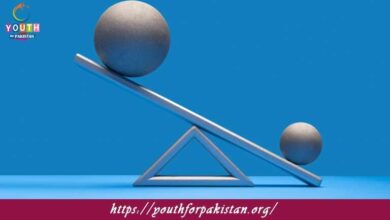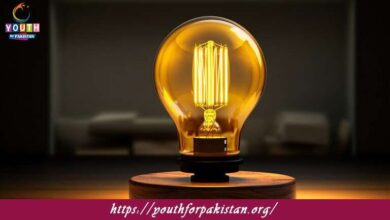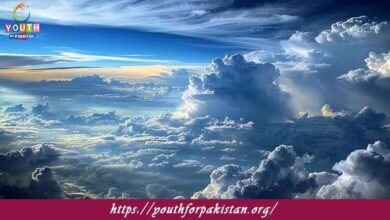10th Class Biology Chapter 13 MCQs with Answers

Understand the essentials of support and movement in living organisms with these MCQs. Topics include the human skeletal system, joints, and locomotion mechanisms. With trending keywords like “biology MCQs support and movement” and “quiz on locomotion systems,” this guide makes learning easier and engaging.
Which of the following is the main function of the skeletal system?
a) Pumping blood
b) Protecting internal organs
c) Producing hormones
d) Carrying out photosynthesis
The skeletal system is made up of:
a) Muscles and bones
b) Nerves and ligaments
c) Cartilage and tendons
d) Bones and cartilage
Which of the following is not a function of the bones in the human body?
a) Providing support and shape
b) Producing red blood cells
c) Storing calcium and other minerals
d) Transmitting nerve impulses
The long bones in the human body are responsible for:
a) Protecting vital organs
b) Providing flexibility
c) Supporting body weight and facilitating movement
d) Aiding in digestion
Which of the following is a connective tissue that attaches muscles to bones?
a) Ligament
b) Tendon
c) Cartilage
d) Joint
The tough, flexible tissue that covers the ends of bones at the joints is called:
a) Ligament
b) Tendon
c) Cartilage
d) Joint capsule
Which type of joint allows the greatest range of motion?
a) Ball-and-socket joint
b) Hinge joint
c) Pivot joint
d) Gliding joint
The vertebrae in the spine are an example of which type of joint?
a) Ball-and-socket joint
b) Hinge joint
c) Pivot joint
d) Gliding joint
Which of the following is responsible for carrying oxygen in the blood?
a) Red blood cells
b) White blood cells
c) Platelets
d) Plasma
The process by which food moves through the digestive system due to muscle contractions is called:
a) Absorption
b) Peristalsis
c) Excretion
d) Secretion
Which of the following is the largest bone in the human body?
a) Femur
b) Humerus
c) Tibia
d) Radius
The skull protects which of the following organs?
a) Heart
b) Lungs
c) Brain
d) Liver
The small, ring-like bones in the neck that support the head are called:
a) Vertebrae
b) Clavicles
c) Ribs
d) Sternum
Which of the following is not a function of the muscular system?
a) Producing movement
b) Providing support to the body
c) Pumping blood
d) Generating heat to maintain body temperature
The muscle that is under conscious control and is responsible for voluntary movements is called:
a) Smooth muscle
b) Cardiac muscle
c) Skeletal muscle
d) Involuntary muscle
The muscle found in the walls of internal organs, such as the stomach and intestines, is called:
a) Smooth muscle
b) Cardiac muscle
c) Skeletal muscle
d) Involuntary muscle
Which of the following is not a function of the integumentary system?
a) Protecting internal organs
b) Regulating body temperature
c) Producing hormones
d) Sensing touch and pain
The outermost layer of the skin is called the:
a) Epidermis
b) Dermis
c) Hypodermis
d) Subcutis
Which of the following is responsible for producing oil to lubricate the skin and hair?
a) Sweat glands
b) Sebaceous glands
c) Salivary glands
d) Lacrimal glands
The skin helps in the synthesis of which vitamin?
a) Vitamin A
b) Vitamin B
c) Vitamin C
d) Vitamin D
Which of the following is responsible for clotting the blood at the site of an injury?
a) Red blood cells
b) White blood cells
c) Platelets
d) Plasma
The tough, fibrous connective tissue that connects bones to other bones is called:
a) Ligament
b) Tendon
c) Cartilage
d) Joint capsule
The joint that allows movement in only one plane, like the elbow joint, is called a:
a) Ball-and-socket joint
b) Hinge joint
c) Pivot joint
d) Gliding joint
The joint that allows circular movement, like the joint between the atlas and axis vertebrae in the neck, is called a:
a) Ball-and-socket joint
b) Hinge joint
c) Pivot joint
d) Gliding joint
The joint that allows movement in many directions, like the hip joint, is called a:
a) Ball-and-socket joint
b) Hinge joint
c) Pivot joint
d) Gliding joint
The joint that allows sliding and twisting movements, like the joints between the wrist bones, is called a:
a) Ball-and-socket joint
b) Hinge joint
c) Pivot joint
d) Gliding joint
Which of the following is a bone found in the arm?
a) Femur
b) Humerus
c) Tibia
d) Radius
The bones in the human body form the framework known as the:
a) Circulatory system
b) Nervous system
c) Skeletal system
d) Muscular system
The bones of the vertebral column are also known as:
a) Vertebrae
b) Clavicles
c) Ribs
d) Sternum
Which of the following is the main component of the human skeleton?
a) Cartilage
b) Ligaments
c) Bones
d) Muscles
Which of the following is a disorder of the skeletal system characterized by porous and fragile bones?
a) Osteoporosis
b) Arthritis
c) Scoliosis
d) Osteoarthritis
Which of the following is a disorder of the muscular system characterized by involuntary muscle contractions?
a) Muscular dystrophy
b) Myasthenia gravis
c) Tetanus
d) Muscular sclerosis
The muscular system works in conjunction with the system to provide movement and support to the body.
a) Circulatory
b) Nervous
c) Digestive
d) Respiratory
The muscles are responsible for pumping blood throughout the body.
a) Skeletal
b) Smooth
c) Cardiac
d) Involuntary
The system is responsible for regulating the body’s internal temperature and
protecting it from external factors.
a) Integumentary
b) Respiratory
c) Endocrine
d) Circulatory
The integumentary system is composed of the:
a) Heart and blood vessels
b) Lungs and airways
c) Skin, hair, and nails
d) Bones and cartilage
The glands in the skin help regulate body temperature by producing sweat.
a) Sebaceous
b) Sweat
c) Salivary
d) Lacrimal [
junkie-toggle title=”Answer” state=”closed”] b) Sweat [/junkie-toggle]
Which of the following is not a function of the skin?
a) Sensing touch and pressure
b) Protecting the body from pathogens
c) Regulating body temperature
d) Producing insulin
Which vitamin is synthesized by the skin in the presence of sunlight?
a) Vitamin A
b) Vitamin B
c) Vitamin C
d) Vitamin D
The system is responsible for carrying oxygen and nutrients to the body’s cells.
a) Circulatory
b) Digestive
c) Respiratory
d) Skeletal
Which of the following is not a component of the circulatory system?
a) Heart
b) Blood vessels
c) Kidneys
d) Blood
The is a muscular organ that pumps blood throughout the body.
a) Lungs
b) Liver
c) Heart
d) Stomach
Which of the following is a component of blood?
a) Nucleus
b) Plasma
c) Lymph
d) Cartilage
The liquid component of blood is called:
a) Red blood cells
b) White blood cells
c) Platelets
d) Plasma
Which blood cells are responsible for carrying oxygen to the body’s tissues?
a) Red blood cells
b) White blood cells
c) Platelets
d) Plasma
The blood vessels carry blood away from the heart.
a) Arteries
b) Veins
c) Capillaries
d) Aorta
The blood vessels carry blood back to the heart.
a) Arteries
b) Veins
c) Capillaries
d) Aorta
The is the largest artery in the human body.
a) Pulmonary artery
b) Aorta
c) Carotid artery
d) Coronary artery
The process by which oxygen and carbon dioxide are exchanged between the lungs and the blood is called:
a) Respiration
b) Ventilation
c) Peristalsis
d) Diffusion
Which of the following is a component of the respiratory system?
a) Liver
b) Kidneys
c) Lungs
d) Stomach
The is the main organ of the respiratory system where gas exchange takes place.
a) Trachea
b) Larynx
c) Bronchi
d) Alveoli
Which of the following is responsible for filtering and humidifying the air we breathe?
a) Trachea
b) Larynx
c) Bronchi
d) Nose
The is a tube-like structure that connects the mouth to the stomach and is responsible for the passage of food.
a) Trachea
b) Esophagus
c) Bronchi
d) Pharynx
Which of the following is responsible for producing digestive enzymes to break down food in the stomach?
a) Liver
b) Gallbladder
c) Pancreas
d) Spleen
The is a muscular organ that churns and mixes food with digestive enzymes.
a) Liver
b) Gallbladder
c) Stomach
d) Pancreas
Which of the following is a component of the digestive system?
a) Lungs
b) Kidneys
c) Stomach
d) Heart
The is a large, muscular organ that stores and concentrates bile.
a) Liver
b) Gallbladder
c) Pancreas
d) Spleen
The is responsible for breaking down fats in the digestive system.
a) Liver
b) Gallbladder
c) Pancreas
d) Spleen
The is responsible for absorbing water and electrolytes from undigested food, forming feces.
a) Small intestine
b) Large intestine
c) Stomach
d) Liver
The process by which undigested waste materials are eliminated from the body is called:
a) Absorption
b) Peristalsis
c) Excretion
d) Secretion
If you are interested to enhance your knowledge regarding Physics, Chemistry, Biology, and Computer please click on the link of each category, you will be redirected to dedicated website for each category.




